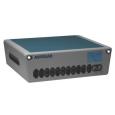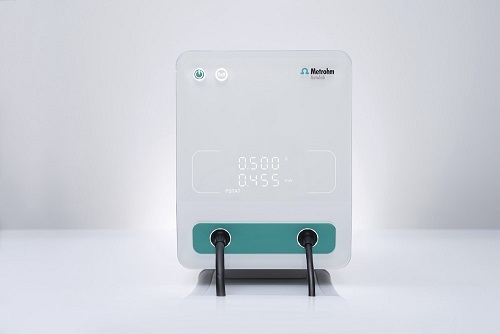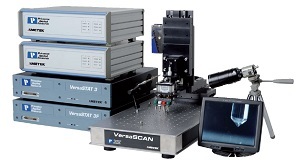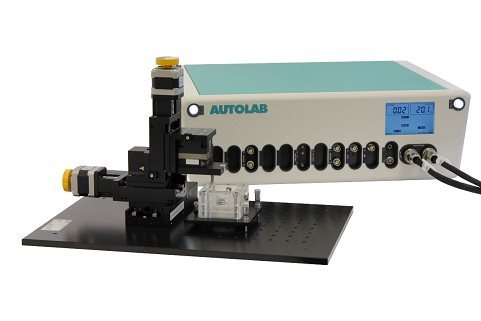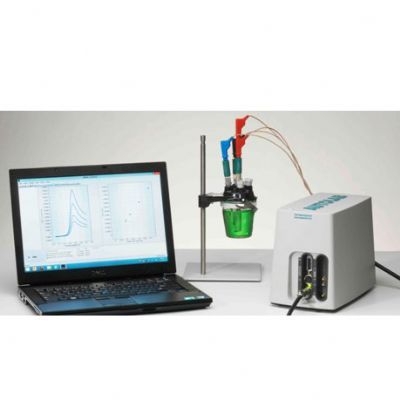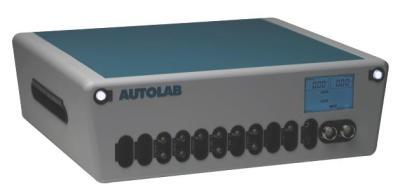
光谱电化学是一种将电化学测量与原位光谱测量相结合的实验方法。光谱测量可以透射或反射进行。
光谱测量在电化学测量过程中提供有用的补充信息。它可用于在电化学测量过程中识别反应中间体或产物结构。
本文着重介绍电化学工作站与光谱仪的联用,并进行了实例分析。
方案详情

Autolab Application Note EC09Spectroelectrochemical measurements Autolab Application Note EC09 Autolab B.v. UV/Visible spectroscopy, Electrochemical methods, Autolabspectrophotometer Summary Spectroelectrochemistry is an experimental method thatcombines an electrochemical measurement coupled to an in-situ spectroscopical measurement..The spectroscopicalmeasurement can be performed either in transmittance or inreflectance. The light is used to probe the immediate vicinityof the working electrode located in the cell. The spectroscopicmeasurement provides useful complementary informationduring an electrochemical measurement. It can be used toidentify reaction intermediates or product structures, duringan electrochemical measurement. Choice of spectrophotometer For this application note, the Autolab spectrophotometer wasused (see Figure 1). This device is directly integrated in theNOVA softwareand can be controlledduring anelectrochemical measurement. Figure 1 - The Autolab spectrophotometer The spectrophotometer is controlled through a USB interfaceby NOVA. The spectrophotometer can acquire one spectrumin the specified range each time the Autolab sends a TTLpulse to the spectrophotometer, using a dedicated cable. The measurements described in the application note areperformed in transmission mode. The spectrophotometer is connected to a cuvette holderusing optical fibers. The cuvette holder is connected to anAutolab light source. This light source covers a range from200 nm to 2500 nm. The light source can be connected to theAutolab using a dedicated cable, allowing the shutter of thelight source to be operated remotely by using a TTL pulse. Experimental conditions The electrochemical cuvette is fitted with a Pt mesh workingelectrode and a Pt counter electrode. The reference electrodeis a small Ag/AgCI 3 M KCl electrode that can be fitted in thelid of the cuvette. The optical path is 1 mm. The cuvette is filled with a few mL of a 0.05 M potassiumferrocyanide (K4[Fe(CN)6]) solution. This solution is paleyellow in color. When the potassium ferrocyanide is oxidizedin potassium ferricyanide (K3[Fe(CN)6]), the solution changesto orange. This electron transfer reaction can therefore befollowed by visible light spectroscopy. The measurement range of the spectrophotometer is definedin the software, see Figure 2. Spectrophotometer display Figure 2-Software settings used to control the spectrophotometer Autolab B.v. The electrochemical measurements were performed usingthe staircase cyclic voltammetry. During the electrochemicalmeasurement, a trigger is sent to the spectrophotometerevery points. For every10data points in theelectrochemical measurement, one spectrum is acquired,using the settings defined in the software (see Figure 2). At the beginning of the measurement, two additionalmeasurements are taken in order to determine the referencespectrum and the dark spectrum (see Figure 3). Figure 3 - Dark spectrum and reference spectrum recorded at thebeginning of the measurement A single dark and reference spectrum is recorded for thewhole experiment. These spectra are recorded at the startpotential of the cyclic voltammetry measurement. Experimental results Figure 4 shows a typical linear sweep voltammetry recordedfor the ferrocyanide/ferricyanide system. Figure 4 - Typical linear sweep voltammogram for the oxidation offerrocyanide At the end of the cyclic voltammetry measurement, thespectroscopic data is recovered from the spectrophotometerand correlated to the electrochemical data. The measuredintensity is converted into absorbance, A,using the formula: Where I is the measured intensity, IDark is the measured darkintensity and IReference is the measured reference intensity. Figure 5 shows an overlay of spectra recorded during thepositive going potential scan. The spectra show an increasein absorbance at 425 nm, corresponding to the formation ofthe oxidized form of ferrocyanide. -0.053V-0.068V0.190V0.214V0.239V-(0.263V-(0.288V0.313V—0.337V- 0.361V—0.385V一0.410V-0.434V一0.459V-0.483V-0.507V-0.532V0.556V-0.581V Figure 5 -Overlay of spectra recorded between 360 nm and 600 nmfor increasing potential values The increase in absorbance at 425 nm is consistent with theyellow shift observed during the oxidation of the Fe(ll) toFe(Ill) complex. Conclusions NOVA provides direct integration of Autolabspectrophotometers and light sources. Combined with asuitable electrochemical cuvette, the combination of theseinstruments together with any Autolabpotentiostat/galvanostat provides the means to perform anyspectroelectrochemical measurement from one convenientsoftware. The spectroscopic data obtained during the measurementcan be directly correlated to the electrochemical data, thusproviding the means to create 3D plots combining thespectroscopic data with the electrochemical data. Date Spectroelectrochemical measurements Page of 光谱电化学是一种将电化学测量与原位光谱测量相结合的实验方法。光谱测量可以透射或反射进行。光谱测量在电化学测量过程中提供有用的补充信息。它可用于在电化学测量过程中识别反应中间体或产物结构。本文着重介绍电化学工作站与光谱仪的联用,并进行了实例分析。
确定
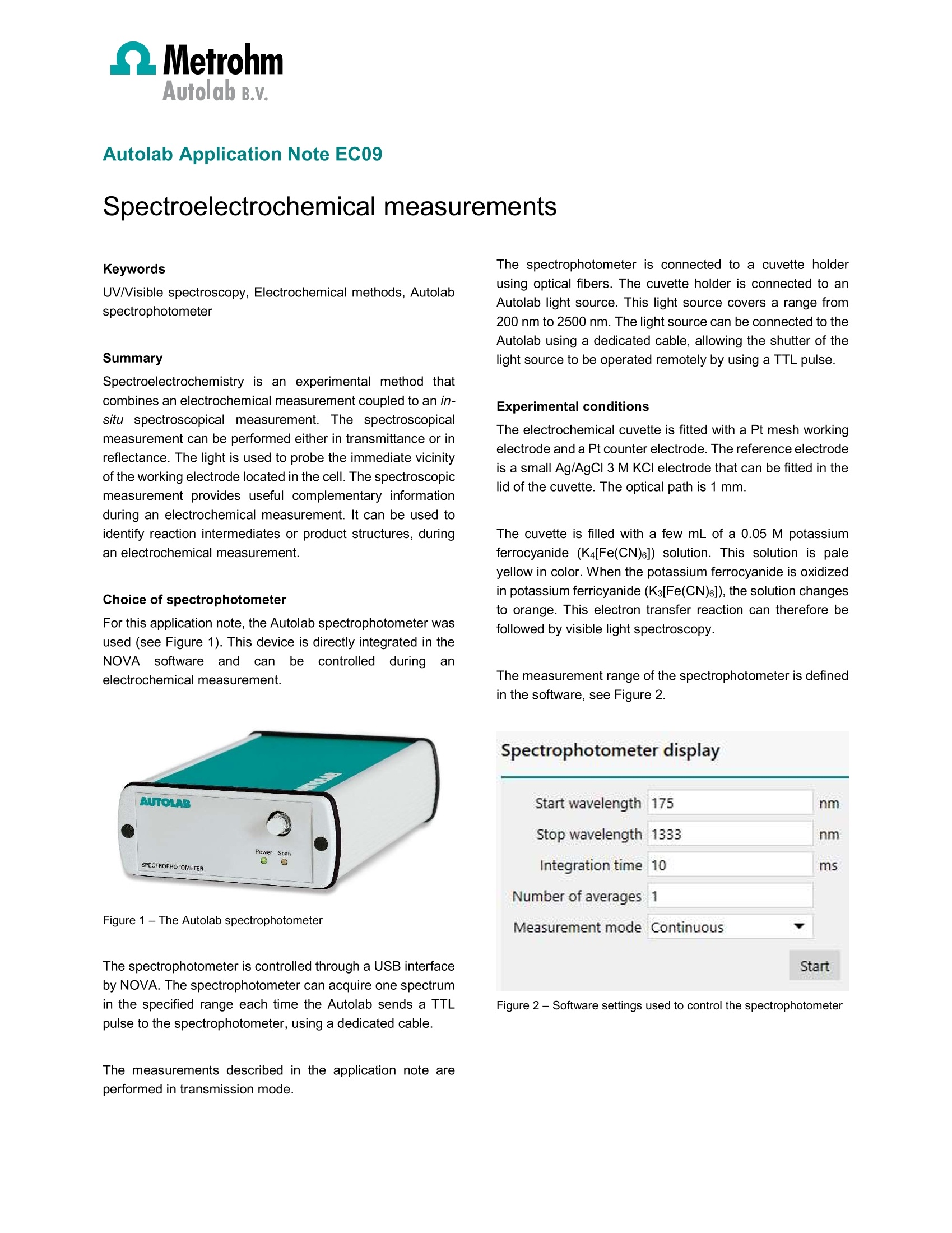
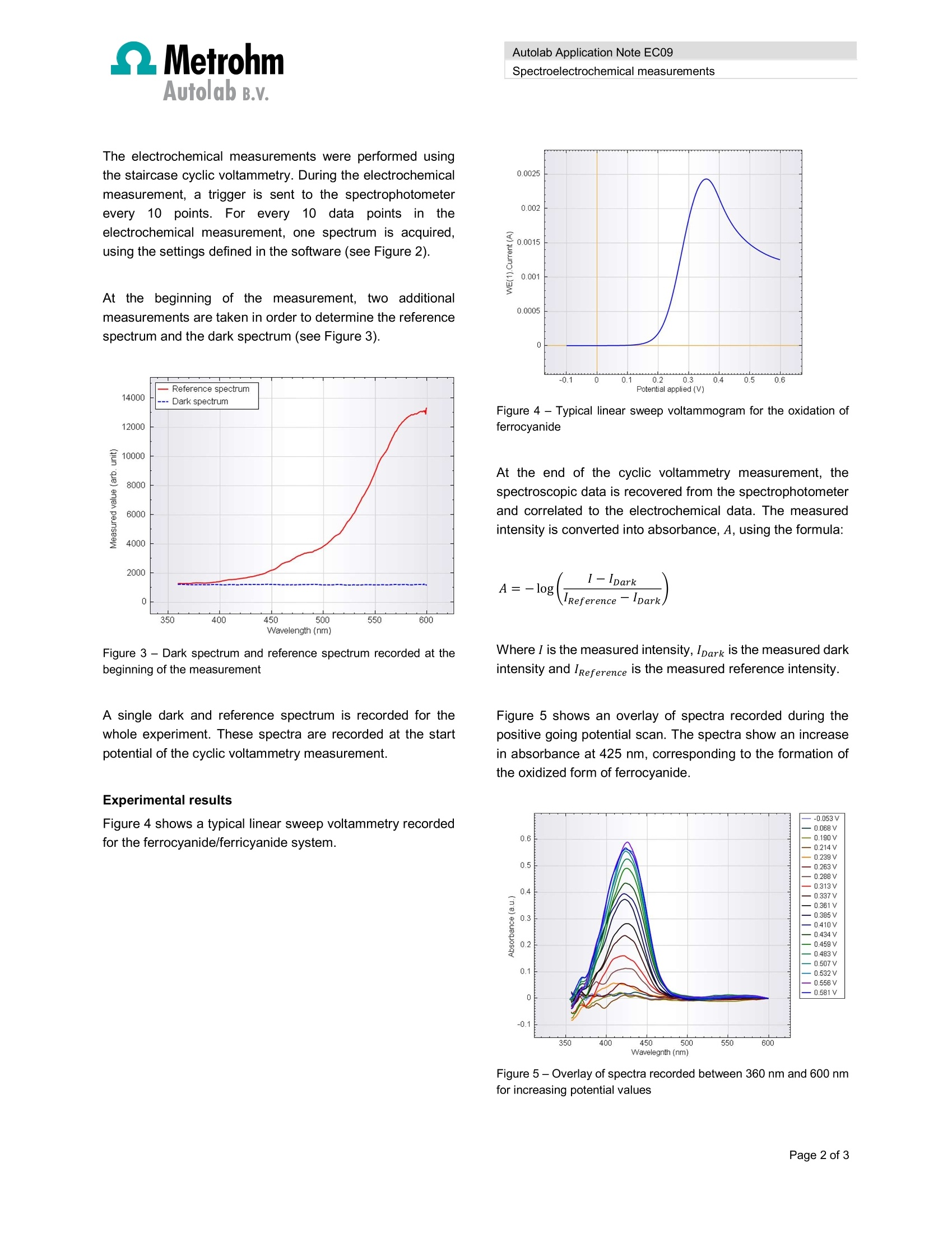

还剩1页未读,是否继续阅读?
瑞士万通中国有限公司为您提供《铁氰化钾中电化学检测方案(电化学工作站)》,该方案主要用于其他中电化学检测,参考标准--,《铁氰化钾中电化学检测方案(电化学工作站)》用到的仪器有瑞士万通PGSTAT302N电化学工作站
推荐专场
相关方案
更多
该厂商其他方案
更多









